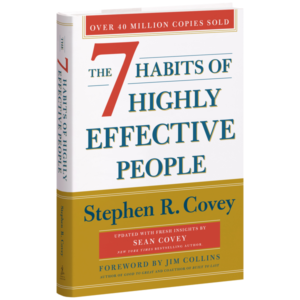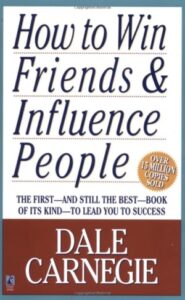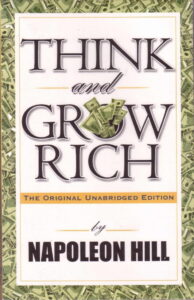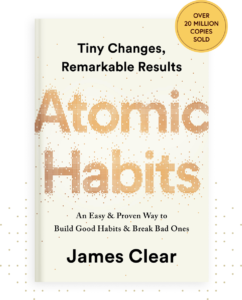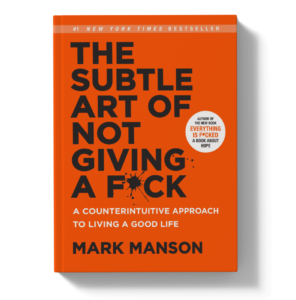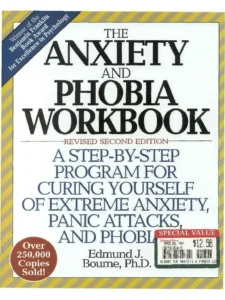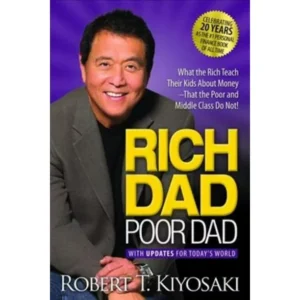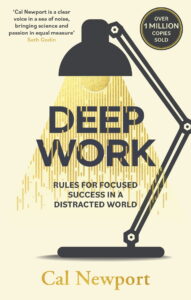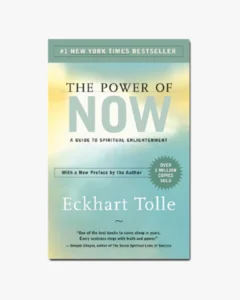Knowledge is power. Reading self help books is one of the best ways to improve your confidence, mindset, income, and every other aspect of your life. I’ve been reading self improvement books since I was a teenager and I can genuinely say it’s transformed me into a different person.
If you’re looking for a list of the best self help books, you’re in the right place. I’ve curated 10 books that you can check out that will help you become the best version of yourself.
Enjoy!
1. “The 7 Habits of Highly Effective People” by Stephen R. Covey
Ever wondered how some people seem to achieve massive success effortlessly? “The 7 Habits of Highly Effective People” by Stephen R. Covey breaks it down for you. Covey’s approach isn’t about quick fixes. It’s about cultivating fundamental habits that drive long-term success.
What’s The Book About?
Covey identifies seven habits that, when practiced consistently, can lead to personal and professional effectiveness. These habits are not just theoretical concepts but practical, actionable steps you can integrate into your daily routine. The book is structured around the idea that real change starts from within, focusing on character ethics rather than superficial techniques.
Main Concepts
- Be Proactive
- Take Initiative: Don’t wait for things to happen. Make them happen. Covey emphasizes the importance of taking responsibility for your actions and decisions. It’s about controlling your environment rather than being controlled by it.
- Proactive Language: Replace reactive phrases like “I can’t” with proactive ones like “I choose to.” This shift in mindset empowers you to take charge of your life.
- Begin with the End in Mind
- Define Your Vision: Visualize where you want to be in the future. Covey advises creating a personal mission statement that acts as a roadmap for your life and career.
- Goal Setting: Align your daily actions with your long-term goals. This habit ensures that every step you take is purposeful and directed towards your ultimate objectives.
- Put First Things First
- Prioritize Tasks: Focus on what’s most important, not just what’s urgent. Covey introduces the time management matrix, which helps you categorize tasks based on their urgency and importance.
- Effective Planning: Use weekly planning sessions to schedule your most important tasks. This habit helps you stay organized and ensures that you’re always moving towards your goals.
- Think Win-Win
- Mutual Benefit: Seek solutions that benefit all parties involved. Covey stresses the importance of developing a mindset that looks for mutually beneficial outcomes in every interaction.
- Building Relationships: Foster strong, positive relationships by ensuring that everyone involved feels valued and heard.
- Seek First to Understand, Then to Be Understood
- Empathetic Listening: Listen to understand, not just to respond. Covey highlights the power of listening deeply to others before offering your perspective.
- Effective Communication: When you truly understand others, your communication becomes more meaningful and impactful.
- Synergize
- Collaborate: Work effectively with others to achieve more than you could alone. Covey shows how combining strengths with others leads to greater results.
- Creative Cooperation: Embrace the differences in people’s perspectives and leverage them to create innovative solutions.
- Sharpen the Saw
- Continuous Improvement: Invest in yourself regularly. Covey encourages ongoing learning and growth in four key areas: physical, social/emotional, mental, and spiritual.
- Balanced Renewal: Ensure that you’re regularly renewing and rejuvenating yourself to maintain high performance.
Whether you’re struggling with productivity, looking to improve your relationships, or aiming to achieve your biggest goals, this book offers practical, actionable advice. Start integrating these habits into your life today, and watch how they transform your path to success.
Grab a copy of The 7 Habits of Highly Effective People here.
2. “How to Win Friends and Influence People” by Dale Carnegie
Looking to supercharge your social skills and influence? Dale Carnegie’s “How to Win Friends and Influence People” is your go-to guide. This isn’t just a book about making friends; it’s a timeless manual for effective communication and building lasting relationships. Carnegie’s principles are as relevant today as they were when the book was first published in 1936.
What’s The Book About?
Carnegie lays out a set of principles designed to help you connect with people, win their trust, and influence them effectively. These principles aren’t about manipulation; they’re about genuine human connection and understanding. The book is divided into four parts, each focusing on different aspects of interpersonal skills.
Main Concepts
- Fundamental Techniques in Handling People
- Don’t Criticize, Condemn, or Complain: Carnegie emphasizes that criticism and negativity breed resentment. Instead, look for ways to encourage and inspire others.
- Give Honest and Sincere Appreciation: People crave appreciation. Carnegie suggests that genuine praise can go a long way in building rapport.
- Arouse in the Other Person an Eager Want: To influence someone, you need to understand their desires and align your requests with what they want. This principle is about tapping into their motivations.
- Six Ways to Make People Like You
- Become Genuinely Interested in Other People: Show real interest in others. Ask questions and listen actively. People love talking about themselves.
- Smile: It’s simple but powerful. A genuine smile can break down barriers and create a positive first impression.
- Remember That a Person’s Name is to That Person the Sweetest Sound in Any Language: Use people’s names in conversation. It makes them feel valued and recognized.
- Be a Good Listener: Encourage others to talk about themselves. Listening is a powerful tool for building connections.
- Talk in Terms of the Other Person’s Interests: Find common ground and discuss topics that interest the other person.
- Make the Other Person Feel Important – and Do It Sincerely: Highlight others’ strengths and make them feel significant in your interactions.
- How to Win People to Your Way of Thinking
- The Only Way to Get the Best of an Argument is to Avoid It: Arguments create winners and losers. Instead, seek mutual understanding.
- Show Respect for the Other Person’s Opinions: Even if you disagree, respect their viewpoint. This opens the door for constructive dialogue.
- If You Are Wrong, Admit It Quickly and Emphatically: Owning up to your mistakes builds trust and credibility.
- Begin in a Friendly Way: Start conversations and negotiations with a friendly tone to set a positive atmosphere.
- Get the Other Person Saying “Yes, Yes” Immediately: Lead with points of agreement to create a collaborative environment.
- Be a Leader: How to Change People Without Giving Offense or Arousing Resentment
- Begin with Praise and Honest Appreciation: Start with positive feedback before addressing areas for improvement.
- Call Attention to People’s Mistakes Indirectly: Use a gentle approach to address mistakes.
- Talk About Your Own Mistakes Before Criticizing the Other Person: This shows humility and creates a collaborative atmosphere.
- Ask Questions Instead of Giving Direct Orders: Encourage cooperation by asking for input rather than dictating actions.
- Let the Other Person Save Face: Avoid embarrassing others; help them maintain dignity.
- Praise the Slightest Improvement and Praise Every Improvement: Consistent, genuine praise motivates people to keep improving.
This book has sold over 30 million copies worldwide, transforming countless lives. Whether you’re looking to improve your personal relationships, advance your career, or simply become a better communicator, this book offers practical, actionable advice that can help you achieve your goals.
Pick up a copy of How to Win Friends and Influence People here.
3. “Think and Grow Rich” by Napoleon Hill
This is a book that I’m currently re-reading at the moment. It’s a deep dive into the mindset and habits of the world’s most successful people. Hill’s principles, drawn from studying the lives of over 500 millionaires, can transform your approach to achieving wealth and personal fulfillment.
What’s The Book About?
Hill’s book is based on the premise that your thoughts shape your reality. If you can change your thinking, you can change your life. “Think and Grow Rich” outlines a 13-step program to develop the mindset and habits necessary to achieve financial and personal success. It’s not just about making money; it’s about creating a life of abundance in every area.
Main Concepts
- Desire
- Burning Desire: Hill emphasizes that the starting point of all achievement is a burning desire to be and to do. This isn’t just a wish or hope, but a definite purpose and a burning desire for its fulfillment.
- Definite Goals: Clearly define what you want. Hill advises writing down your goals, reading them aloud, and visualizing them daily.
- Faith
- Visualization and Belief: Faith is the visualization and belief in the attainment of desire. Hill describes faith as the head chemist of the mind, which, combined with desire, can transform thoughts into reality.
- Affirmations: Use positive affirmations to strengthen your belief and create a mental image of success.
- Autosuggestion
- Self-Suggestion: Autosuggestion is the process of influencing your subconscious mind through repetitive thoughts. Hill suggests using affirmations and repeated positive statements to embed your goals into your subconscious.
- Consistent Practice: Make autosuggestion a daily habit to reinforce your desires and goals.
- Specialized Knowledge
- Continuous Learning: Acquire specialized knowledge in your field of interest. Hill points out that general knowledge, no matter how vast, won’t lead to great success. It’s the application of specialized knowledge that makes the difference.
- Seek Expertise: Learn from experts and continually update your knowledge to stay ahead.
- Imagination
- Creative Imagination: Use your imagination to come up with ideas and plans to achieve your goals. Hill believes that imagination is the workshop where all plans are created.
- Brainstorming: Regularly brainstorm new ideas and solutions to keep your imagination active.
- Organized Planning
- Action Plans: Create a concrete plan of action to achieve your goals. Hill emphasizes the importance of organized planning and taking action.
- Mastermind Group: Form a mastermind group of like-minded individuals who can provide support and feedback on your plans.
- Decision
- Decisiveness: Successful people make decisions quickly and change them slowly. Indecision and procrastination are the enemies of progress.
- Commitment: Once you’ve made a decision, commit to it and take consistent action.
- Persistence
- Never Give Up: Persistence is essential for overcoming obstacles and achieving success. Hill highlights the importance of maintaining effort and enthusiasm over the long haul.
- Overcoming Failure: Treat failures as learning opportunities and keep pushing forward.
- The Mastermind
- Collective Wisdom: Leverage the power of a mastermind group to generate ideas, provide accountability, and offer different perspectives. Hill credits much of his success to the collective wisdom of his mastermind group.
- Collaboration: Regularly meet with your group to discuss progress and challenges.
- The Mystery of Sex Transmutation
- Channeling Energy: Hill introduces the concept of redirecting sexual energy into creative and productive outlets. This might seem unconventional, but Hill argues that it’s a powerful force when properly harnessed.
- Creative Focus: Use this energy to fuel your creative endeavors and ambitions.
- The Subconscious Mind
- Mental Programming: Your subconscious mind is a powerful tool that can be programmed with positive thoughts and goals. Hill advises using visualization and autosuggestion to influence your subconscious.
- Positive Input: Feed your mind with positive and constructive thoughts regularly.
- The Brain
- Brain Power: Hill discusses the brain as a broadcasting and receiving station for thoughts. By tuning into positive and constructive thoughts, you can attract similar energies.
- Mental Tuning: Practice focusing your mind on positive, success-oriented thoughts.
- The Sixth Sense
- Intuition: The sixth sense, or intuition, is the final step in the philosophy of “Think and Grow Rich.” Hill believes that developing a strong sense of intuition can guide you toward making better decisions.
- Inner Voice: Learn to trust your inner voice and use it to guide your actions and decisions.
This book is a must-read for anyone serious about personal development and financial success. It provides a comprehensive, actionable roadmap to achieving your goals and realizing your potential.
Grab a copy of Think and Grow Rich here.
4. “Atomic Habits” by James Clear
“Atomic Habits” by James Clear is your ultimate guide to building good habits and breaking bad ones. It’s a practical, science-backed manual for transforming your behavior and achieving remarkable results. Clear’s approach is all about making small changes that lead to big results over time.
What’s The Book About?
“Atomic Habits” focuses on the idea that tiny changes can lead to remarkable results. Clear breaks down the complex process of habit formation into simple, actionable steps. The book emphasizes the power of atomic habits – small habits that are easy to do but can compound into significant improvements.
Main Concepts
- The Surprising Power of Atomic Habits
- Small Changes, Big Results: Clear emphasizes that tiny changes, when consistently applied, can lead to significant transformations. He uses the analogy of compounding interest to explain how habits work.
- 1% Better Every Day: Focus on getting just 1% better each day. Over time, these small improvements add up to substantial progress.
- The Four Laws of Behavior Change
- Make It Obvious
- Cue: Identify the triggers that prompt your habits. Clear suggests designing your environment to make cues for good habits more obvious.
- Implementation Intentions: Plan your habits by stating when and where you will perform them. For example, “I will exercise at 7 AM in the living room.”
- Make It Attractive
- Craving: Make your habits appealing. Pair activities you need to do with activities you want to do, like listening to your favorite podcast while exercising.
- Temptation Bundling: Combine something you enjoy with a habit you’re trying to build.
- Make It Easy
- Response: Reduce friction to make it easier to perform your habits. Clear suggests starting with habits that take less than two minutes to complete.
- Environment Design: Optimize your environment to make the right actions the default.
- Make It Satisfying
- Reward: Use immediate rewards to reinforce positive behavior. Track your habits to create a sense of accomplishment.
- Habit Tracking: Use habit trackers to monitor your progress and stay motivated.
- Make It Obvious
- The Habit Loop
- Cue, Craving, Response, Reward: Clear explains the habit loop, a four-step pattern that governs every habit. Understanding this loop helps you build new habits and break old ones.
- Habit Stacking: Use the habit stacking technique to build new habits on top of existing ones. For example, after brushing your teeth (existing habit), you do a set of push-ups (new habit).
- The Role of Identity in Habit Formation
- Identity-Based Habits: Focus on the type of person you want to become, not just the outcomes you want to achieve. This shifts your mindset and helps you stick to your habits.
- Affirm Your Identity: Reinforce your desired identity with small wins that prove to yourself you are becoming that person. For example, every time you write, you affirm your identity as a writer.
- Breaking Bad Habits
- Inversion of the Four Laws: To break bad habits, invert the four laws: make it invisible, unattractive, difficult, and unsatisfying.
- Environment Control: Remove cues that trigger your bad habits and replace them with cues for good habits.
- Advanced Tactics for Habit Formation
- Habit Contracts: Use accountability to reinforce habits. Make a contract with yourself or someone else outlining the consequences if you don’t stick to your habits.
- Social Environment: Surround yourself with people who have the habits you want to adopt. Social norms can significantly influence your behavior.
Whether you’re trying to build a fitness routine, improve your productivity, or develop any other positive habit, “Atomic Habits” provides a clear, actionable framework to get you there.
Grab a copy of Atomic Habits here.
5. “The Subtle Art of Not Giving a F*ck” by Mark Manson
Tired of trying to be positive all the time? “The Subtle Art of Not Giving a F*ck” by Mark Manson is a refreshing take on personal development. It’s raw, real, and brutally honest. Manson’s approach cuts through the fluff and gets straight to the point: sometimes, life sucks, and that’s okay. It’s about focusing on what really matters and letting go of the rest.
What’s The Book About?
Manson’s book is built on the idea that we only have a limited number of f*cks to give, so we should spend them wisely. It challenges the conventional wisdom of always being positive and instead promotes the value of embracing life’s struggles and limitations. The goal is to find what truly matters to you and to prioritize those things above all else.
Main Concepts
- Choose Your F*cks Wisely
- Limited Resources: Manson argues that we have a limited amount of mental and emotional energy. We should invest it in things that truly matter.
- Values: Identify what you genuinely care about. Let go of societal expectations and focus on your own values.
- The Feedback Loop from Hell
- Negative Spiral: Constantly worrying about being happy can make you miserable. Manson calls this the “feedback loop from hell.”
- Acceptance: Accept that life is full of struggles. Embrace your flaws and mistakes instead of obsessing over them.
- The Value of Suffering
- Meaningful Struggles: Choose problems and struggles that are meaningful to you. Manson suggests that true happiness comes from solving worthwhile problems.
- Growth Through Pain: Pain and failure are inevitable. They’re opportunities for growth and self-improvement.
- Responsibility
- Ownership: Take responsibility for everything in your life, even things that aren’t your fault. This gives you power and control over your circumstances.
- Empowerment: By owning your problems, you gain the ability to solve them and move forward.
- The Importance of Saying No
- Boundaries: Learn to say no to things that don’t align with your values. This creates space for the things that truly matter.
- Selective F*cks: Prioritize your commitments. Not everything deserves your time and energy.
- Embracing Uncertainty
- Fallibility: Accept that you don’t know everything and that it’s okay to be wrong. Embracing uncertainty can lead to personal growth.
- Open-Mindedness: Be open to new experiences and ideas. Challenge your beliefs and assumptions.
- The Finality of Death
- Mortality: Recognize the finite nature of life. Use this awareness to prioritize what’s truly important.
- Legacy: Focus on what you want to leave behind. Live in a way that aligns with your core values and goals.
This book is perfect for anyone tired of the overly positive, unrealistic advice often found in self-help books. Manson’s approach is grounded in reality and offers practical strategies for focusing on what truly matters.
Grab a copy of The Subtle Art of Not Giving a Fck here.
6. “You Are a Badass” by Jen Sincero
“You Are a Badass” by Jen Sincero is the kick in the butt you’ve been waiting for. This isn’t your typical self-help book. It’s a sassy, no-nonsense guide to transforming your life and embracing your inner badass. Sincero’s witty, irreverent style makes personal growth fun and accessible.
What’s The Book About?
“You Are a Badass” is about breaking free from self-doubt and fear to create the life you truly want. Sincero combines personal anecdotes with practical advice to help you overcome obstacles and tap into your potential. The book is divided into 27 bite-sized chapters, each packed with humor, insights, and actionable steps.
Main Concepts
- The Power of Thought
- Mindset Shift: Sincero emphasizes the importance of changing your mindset. She argues that your thoughts shape your reality, and by thinking positively, you can transform your life.
- Belief in Yourself: Start believing that you are capable of achieving great things. Sincero encourages readers to cultivate self-love and confidence.
- Getting Clear on What You Want
- Vision: Clearly define what you want in life. Sincero advises creating a vision board and setting specific, tangible goals.
- Focus: Concentrate on what you desire, not what you lack. By focusing on your goals, you attract opportunities to achieve them.
- Taking Action
- Do It Now: Stop procrastinating and start taking action. Sincero stresses the importance of doing something every day that brings you closer to your goals.
- Risk and Failure: Don’t be afraid to take risks and fail. Sincero shares her own experiences of failure and how they led to growth and success.
- Overcoming Fear
- Face Your Fears: Confront your fears head-on. Sincero provides strategies for dealing with fear and using it as a motivator rather than a deterrent.
- Comfort Zone: Push yourself out of your comfort zone. Real growth happens when you challenge yourself.
- The Importance of Gratitude
- Practice Gratitude: Cultivate a habit of gratitude. Sincero suggests keeping a gratitude journal and regularly acknowledging the good things in your life.
- Positive Vibes: Gratitude raises your vibration and attracts more positivity into your life.
- Money Mindset
- Abundance Mentality: Shift your mindset from scarcity to abundance. Sincero discusses how your beliefs about money affect your financial reality.
- Attracting Wealth: Visualize wealth and take actions that align with attracting financial abundance.
- Finding Your Tribe
- Support System: Surround yourself with positive, supportive people who encourage your growth. Sincero highlights the importance of having a strong network.
- Ditch Negativity: Distance yourself from negative influences that hold you back.
Why Check It Out?
“You Are a Badass” is a manifesto for embracing your true potential and living your best life. Sincero’s relatable, humorous approach makes serious topics like mindset, fear, and self-worth feel accessible and actionable.
Grab a copy of You Are a Badass here.
7. “The Anxiety and Phobia Workbook” by Edmund J. Bourne
As someone who has had their fair share of anxiety over the years, this is a great book I had to include. “The Anxiety and Phobia Workbook” by Edmund J. Bourne is a comprehensive guide designed to help you take control. It’s a detailed, practical resource packed with proven strategies to manage and overcome anxiety and phobias.
What’s The Book About?
Bourne’s workbook offers a multi-faceted approach to treating anxiety disorders and phobias. It’s structured around evidence-based techniques and includes exercises, worksheets, and step-by-step plans to help you apply these strategies to your daily life. The goal is to equip you with the tools you need to reduce anxiety, manage stress, and conquer fears.
Main Concepts
- Understanding Anxiety and Phobias
- Types of Anxiety Disorders: Bourne explains the different types of anxiety disorders, including generalized anxiety disorder (GAD), panic disorder, social anxiety disorder, and specific phobias.
- Causes and Triggers: Learn about the underlying causes of anxiety and phobias, from genetic factors to environmental triggers and life experiences.
- Cognitive-Behavioral Techniques
- Challenging Negative Thoughts: Bourne introduces cognitive restructuring, a technique to identify and challenge irrational thoughts that fuel anxiety.
- Behavioral Strategies: Practical steps to gradually face and overcome fears through exposure therapy and systematic desensitization.
- Relaxation Techniques
- Breathing Exercises: Learn how to use deep breathing techniques to calm your nervous system.
- Progressive Muscle Relaxation: A step-by-step guide to systematically relaxing each muscle group in your body to reduce physical tension.
- Mindfulness and Meditation
- Mindfulness Practices: Incorporate mindfulness into your daily routine to stay present and reduce anxiety.
- Meditation Exercises: Simple meditation techniques to promote relaxation and mental clarity.
- Lifestyle and Self-Care
- Healthy Lifestyle Choices: The importance of diet, exercise, and sleep in managing anxiety.
- Stress Management: Strategies to manage stress, including time management, setting boundaries, and self-care practices.
- Medication and Therapy Options
- Medications: Overview of medications commonly prescribed for anxiety disorders, their benefits, and potential side effects.
- Therapeutic Approaches: Different types of therapy, including cognitive-behavioral therapy (CBT), acceptance and commitment therapy (ACT), and other effective treatments.
- Developing a Personal Action Plan
- Setting Goals: How to set realistic, achievable goals for overcoming anxiety.
- Creating a Workbook: Using the exercises and worksheets provided in the book to develop a personalized plan for managing anxiety.
This book provides a structured, step-by-step approach to help you understand your condition and take actionable steps toward recovery.
Grab a copy of The Anxiety and Phobia Workbook here.
8. “Rich Dad Poor Dad” by Robert T. Kiyosaki
This is a classic book on business and finance that everyone should read. “Rich Dad Poor Dad” by Robert T. Kiyosaki is a famous book that challenges conventional wisdom about money. It’s a paradigm-shifting guide to thinking about wealth, investments, and financial independence. Kiyosaki’s unique perspective will change how you view money forever.
What’s The Book About?
“Rich Dad Poor Dad” contrasts the financial philosophies of Kiyosaki’s two father figures: his own highly educated but financially struggling biological father (Poor Dad), and the father of his best friend who was a wealthy entrepreneur (Rich Dad). Through their differing viewpoints, Kiyosaki uncovers essential lessons about money, investing, and achieving financial freedom.
Main Concepts
- The Importance of Financial Education
- Mindset Shift: Kiyosaki emphasizes the need for financial literacy. He argues that traditional education doesn’t prepare people for real-world financial success.
- Learn the Language of Money: Understand basic financial concepts like assets, liabilities, income, and expenses.
- The Difference Between Assets and Liabilities
- Assets vs. Liabilities: Rich Dad taught Kiyosaki that assets put money in your pocket, while liabilities take money out. This simple distinction is crucial for building wealth.
- Building Assets: Focus on acquiring assets such as real estate, stocks, and businesses that generate passive income.
- The Rich Don’t Work for Money
- Income vs. Wealth: Poor Dad believed in working for a steady paycheck, while Rich Dad emphasized creating and growing wealth through investments.
- Passive Income: The importance of developing sources of passive income to achieve financial independence.
- The Power of Corporations
- Tax Advantages: Kiyosaki explains how the rich use corporations to protect their assets and take advantage of tax benefits.
- Entrepreneurial Mindset: Encourages thinking like an entrepreneur rather than an employee.
- Overcoming Obstacles
- Fear: Many people are held back by the fear of losing money. Kiyosaki stresses the importance of overcoming this fear to seize opportunities.
- Cynicism and Laziness: Addressing the mental barriers that prevent people from taking action and investing in their financial education.
- The Importance of Taking Action
- Start Small: Kiyosaki advises starting with small investments and gradually building up as you gain knowledge and confidence.
- Continuous Learning: Always seek to improve your financial education through books, courses, and practical experience.
- Work to Learn, Don’t Work for Money
- Skills Over Paychecks: Focus on acquiring skills that will serve you in the long run, rather than just working for immediate financial rewards.
- Life-Long Learning: Embrace a mindset of continuous improvement and learning.
This book is perfect for anyone looking to break free from the traditional 9-to-5 grind and achieve true financial independence. Whether you’re just starting out on your financial journey or looking to refine your investment strategies, “Rich Dad Poor Dad” provides practical, actionable advice to help you build and sustain wealth.
Grab a copy of Rich Dad Poor Dad here.
9. “Deep Work” by Cal Newport
I have a copy of this book on my desk as we speak. “Deep Work” by Cal Newport is your essential guide to mastering the art of focused success. This isn’t just another productivity book; it’s a manifesto for achieving extraordinary results in a hyper-distracted world. Newport’s insights will transform how you approach work and help you achieve more in less time.
What’s The Book About?
“Deep Work” explores the concept of deep work – the ability to focus without distraction on cognitively demanding tasks. Newport contrasts deep work with shallow work, which consists of non-cognitive, logistical tasks often performed while distracted. He argues that cultivating deep work is crucial for achieving peak productivity and producing high-quality results.
Main Concepts
- The Value of Deep Work
- Economic Advantage: In today’s economy, the ability to perform deep work is a rare and valuable skill. Newport explains that those who cultivate this skill will stand out and achieve greater success.
- Quality Over Quantity: Deep work leads to higher quality output, making you more efficient and effective in your professional endeavors.
- The Four Rules of Deep Work
- Work Deeply: Establish routines and rituals to minimize distractions and maximize concentration. Newport suggests creating a specific environment for deep work and sticking to a strict schedule.
- Embrace Boredom: Resist the urge to switch to superficial tasks when you get bored. Training your mind to handle boredom is essential for building deep work capacity.
- Quit Social Media: Newport advocates for a minimalist approach to technology. Assess whether each tool brings significant benefits and eliminate those that don’t.
- Drain the Shallows: Reduce the amount of time spent on shallow work. Schedule your day to ensure you have ample time for deep work sessions.
- Strategies for Deep Work
- Time Blocking: Allocate specific blocks of time for deep work. Treat these blocks as non-negotiable appointments.
- Monastic Approach: Adopt an approach where you isolate yourself for extended periods to focus solely on your deep work tasks.
- Bimodal Approach: Alternate between periods of deep work and periods of shallow work. Ensure that deep work periods are substantial enough to make meaningful progress.
- Rhythmic Approach: Create a regular schedule that includes daily or weekly deep work sessions. Consistency is key to building deep work habits.
- Techniques to Enhance Focus
- Ritualize Your Work: Develop rituals and routines that signal the start of deep work sessions. This could include specific times, locations, and preparatory activities.
- Measure Your Depth: Track how much time you spend on deep work versus shallow work. Use this data to make adjustments and increase your deep work ratio.
- Productive Meditation: Use downtime for productive meditation by focusing on a single professional problem while engaging in a physical activity, like walking.
- Balancing Deep Work with Life
- Shutdown Rituals: Establish end-of-day rituals to ensure you completely disconnect from work. This helps maintain a work-life balance and prepares your mind for the next deep work session.
- Leisure Time: Schedule time for leisure and relaxation. Deep work requires mental energy, so it’s crucial to recharge through activities you enjoy.
In a world where distractions are constant, “Deep Work” offers a lifeline to reclaim your focus and productivity. Whether you’re looking to excel in your career, complete complex projects, or simply improve your concentration, this book provides the tools you need to thrive.
Grab a copy of Deep Work here.
10. “The Power of Now” by Eckhart Tolle
This is one of the most life-changing books I have ever read. Even if you’re not a spiritual person, this is one of the best self help books to check out.
It’s a transformative guide to living fully in the present moment. Eckhart explains how a profound exploration of how embracing the present can lead to inner peace and true happiness. Tolle’s insights are simple yet profound, offering a path to transcending the distractions and stresses of modern life.
What’s The BookAabout?
“The Power of Now” focuses on the importance of being present. Tolle argues that most of our pain and suffering come from dwelling on the past or worrying about the future. By learning to live in the now, we can free ourselves from these negative patterns and experience true joy and peace. The book combines spiritual wisdom with practical advice, making it accessible and applicable to everyday life.
Main Concepts
- Living in the Now
- Present Moment Awareness: Tolle emphasizes the importance of fully experiencing the present moment. He explains that the present is the only time that truly exists, and it’s where life happens.
- Mindfulness: Practice mindfulness by paying attention to your thoughts, feelings, and surroundings without judgment. This helps you stay grounded in the now.
- The Ego and the Mind
- Egoic Mind: Tolle describes the ego as the part of the mind that identifies with thoughts and forms a sense of self based on the past and future. The ego is the source of much of our suffering.
- Transcending the Ego: Learn to observe your thoughts without becoming attached to them. Recognize that you are not your thoughts; you are the awareness behind them.
- The Pain-Body
- Emotional Pain: Tolle introduces the concept of the “pain-body,” an accumulation of old emotional pain that lives within us. It’s triggered by negative experiences and feeds on negative thoughts.
- Dissolving the Pain-Body: By staying present and observing the pain-body without judgment, you can begin to dissolve it and reduce its hold on your life.
- Acceptance and Surrender
- Acceptance: Embrace what is happening in the present moment without resistance. Acceptance doesn’t mean resignation; it means acknowledging reality as it is.
- Surrender: Surrender to the present moment, especially when facing challenges. This doesn’t mean giving up; it means letting go of the need to control everything and trusting the flow of life.
- The Power of Presence
- Being vs. Doing: Shift from a constant state of doing to a state of being. This means fully engaging with whatever you are doing in the present moment, whether it’s working, eating, or simply sitting in silence.
- Inner Peace: Discover that true peace and happiness come from within, not from external circumstances. Presence brings a sense of calm and contentment.
- Relationships and the Present
- Conscious Relationships: Bring presence into your relationships by fully listening and engaging with others. This creates deeper connections and reduces conflict.
- Healing Relationships: Use the principles of presence and acceptance to heal and improve your relationships, making them more fulfilling and harmonious.
- The Practice of Presence
- Daily Practices: Integrate presence into your daily life through practices like meditation, mindful breathing, and conscious observation.
- Staying Present: Develop habits that help you stay anchored in the now, such as taking regular breaks, spending time in nature, and simplifying your life.
If you struggle with anxiety, want inner peace, or are looking to improve your relationships, “The Power of Now” gives wisdom that you can apply immediately.
Grab a copy of The Power of Now here.
Wrapping up The Best Self Help Books
That sums up some of the best self help books you can read to improve your life and relationships. Check out these authors and their work if you want to level up your mindset, relationships, finances, and more.
Make sure that you apply what they teach. You learn by taking action and doing, not simply by reading.
If you want to get self-help coaching and courses, explore my Transformation Academy.



